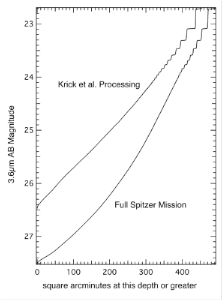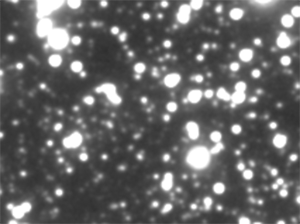The IRAC observations are the fundamental "backbone" dataset. IRAC has several different frametimes (length of individual exposures) available, each of which is calibrated separately. However, for various reasons the 100-second frametime (the longest) has the largest total time available. Over the course of the entire mission, over 720 hours were devoted to these 100-second calibration observations, and it is those that we have processed here.
The IRAC Dark Field is mapped with a 3x3 mosaic pattern, the dynamics of which are described in the epochal data section. The result is a field roughly 15 arcminutes in diameter. It is deepest at the center; the resulting full-depth coadded images at 3.6 and 4.5µm peak at 186 hours in depth. The 5.8 and 8µm detectors only worked during the cryogenic phase of the mission; their peak depth is closer to 60 hours.
The IRAC Dark Field is mapped with a 3x3 mosaic pattern, the dynamics of which are described in the epochal data section. The result is a field roughly 15 arcminutes in diameter. It is deepest at the center; the resulting full-depth coadded images at 3.6 and 4.5µm peak at 186 hours in depth. The 5.8 and 8µm detectors only worked during the cryogenic phase of the mission; their peak depth is closer to 60 hours.
Total area as a function of depth, comparing the earlier processing of Krick et al. (2009) vs the final processing of the entire mission. The quoted depth does not include the effects of source confusion, but rather is a reflection of root-N in exposure time.

